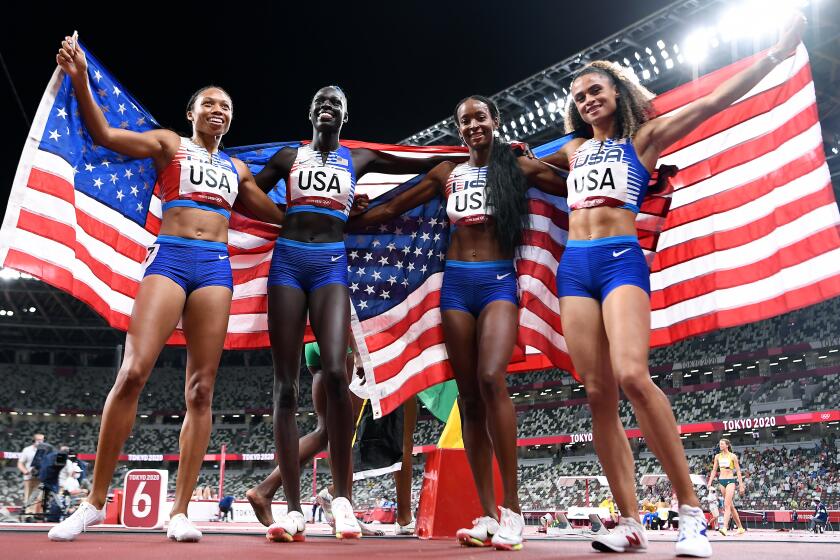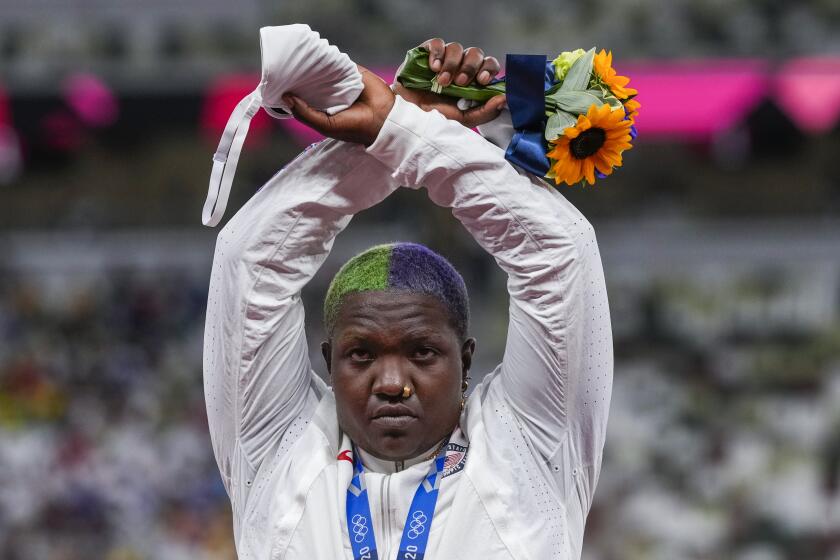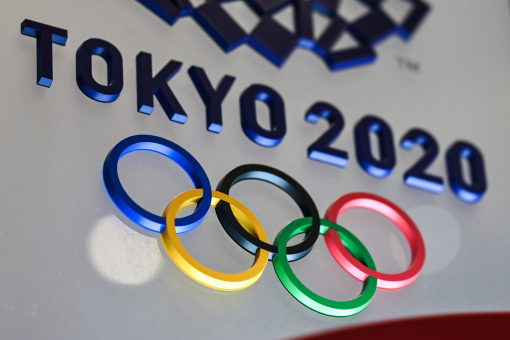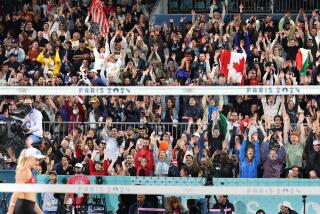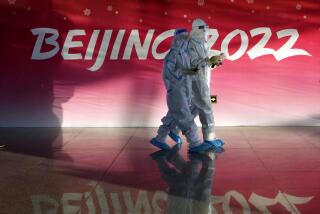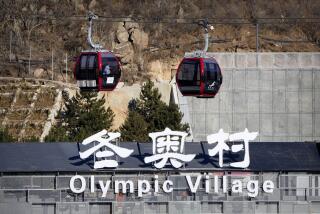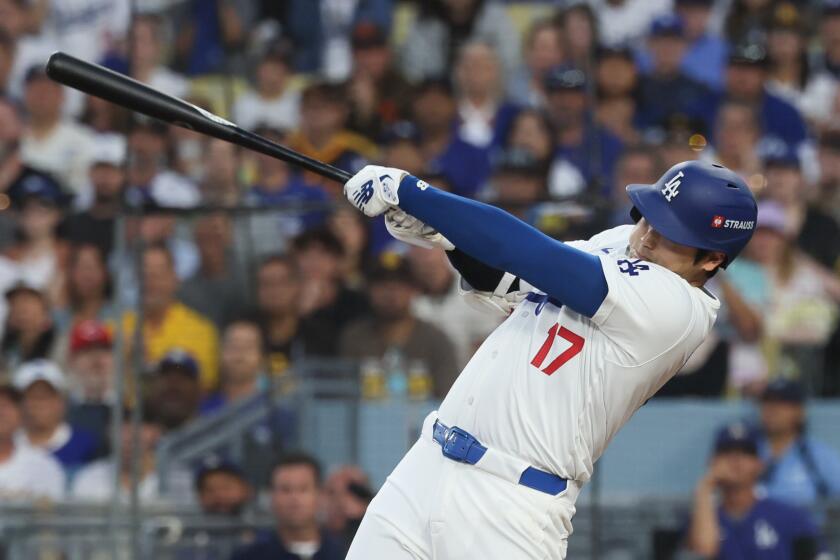How Tokyo Olympic organizers managed to keep COVID-19 mostly in check
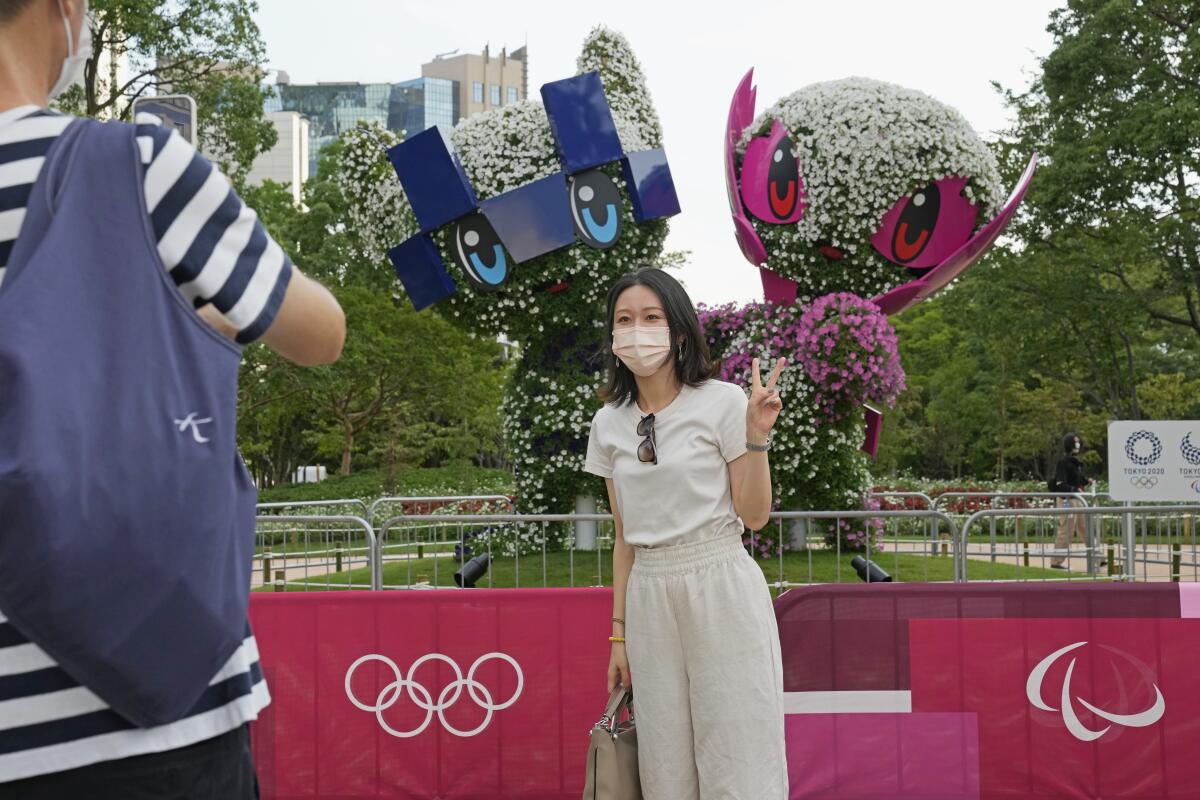
- Share via
TOKYO — A few dozen people gathered along the walkway at Symbol Promenade Park on a recent night to munch on bento box meals and strain for a glimpse as climbers scaled the enormous wall under the lights at Aomi Urban Sports Park.
The distant voice of the public address announcer floated through the muggy air and mixed with pleas by the police officers and security guards over loudspeakers for the spectators in front of them to move along.
“Please don’t stop around here,” signs posted every few feet said in English and Japanese. They were interspersed with posters warning to “Keep physical distance” to protect against COVID-19.
The specter of the pandemic hung over each moment of the Summer Olympics, much like the 65-foot-tall Gundam robot that towered over an entrance to a popular shopping mall behind the small crowd.
A day after winning bronze in the 400 meters, Allyson Felix wins gold with the 1,600-meter relay team at the Tokyo Olympics. It’s her 11th medal.
Though the Games, which ended Sunday, didn’t result in a widespread outbreak among the 42,000 athletes, officials, media and other credentialed visitors from outside the country, they played out in venues without spectators amid Tokyo’s worst surge of the pandemic.
Daily cases in the metropolis of almost 14 million soared from 1,359 the day of the opening ceremony to surpassing 5,000 for the first time in the final days of the Games, despite a state of emergency and ubiquitous mask-wearing.
But the Olympics bubble — built around aggressive testing, phone apps that tracked the health of each credentialed person, mandatory masks and a slew of other restrictions — remained largely intact. International Olympic Committee President Thomas Bach lauded the measures in his wrap-up news conference: “All the figures are confirming that this concept of anti-coronavirus measures have worked.”
In all, 436 people linked to the Olympics tested positive for COVID-19 in Japan since July 1. Of those, 32 were athletes, 112 Games-concerned personnel, 25 media, 10 Tokyo 2020 employees, 235 contractors and 21 volunteers. About two-thirds of the positives were Japanese residents.
Long-standing worries about a high-profile team or an athlete with a household name being removed from competition because of a positive test never materialized. Though 32 of the cases, including 18 athletes, came inside the Olympic village — the bubble inside a bubble — they didn’t trigger a larger problem.
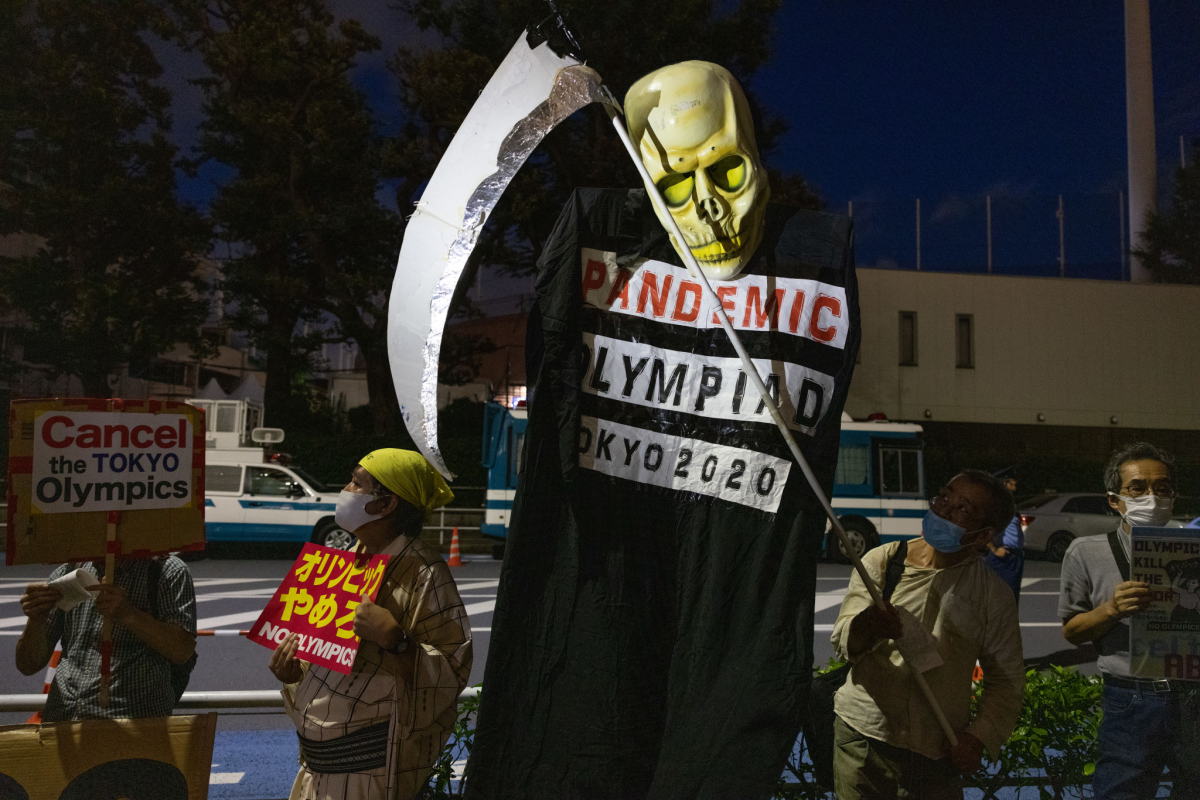
Like others traveling to Japan, athletes had to test twice in the 96 hours before their flight. That resulted in a handful of U.S. athletes, such as basketball player Bradley Beal, golfer Bryson DeChambeau and tennis star Coco Gauff, pulling out of the Games because of positive tests.
From the outset, organizers decided to treat every credential-holder as if they weren’t vaccinated. That led to a routine unlike any other Olympics, in which bottles of hand sanitizer seemed more commonplace than pictures of Miraitowa, the cartoonish blue-and-white mascot of the Games, each person’s temperature was checked before entering a venue and ordinary residents wanting to get a peek at a competition were shooed away.
Athletes were tested daily — other credential-holders were tested regularly, as spitting into small plastic vials became as much a part of the Games as hearing national anthems — and faced precautions such as plastic dividers on tables in their dining hall. Medal winners had to hang the trophy around their own necks. They were only permitted to drink alcohol while alone in their rooms. Athletes had to leave the country when their competition finished, unlike past Olympics in which enjoying the social life in the village and exploring the host city after competitions was commonplace.
With the Tokyo Olympics drawing to a close, there have been only a few, relatively mild demonstrations by athletes from the U.S. and other countries.
Media were subject to a 14-day soft quarantine upon entering the country, limiting movement to trips between their hotel, the main press center and approved venues, in addition to mandatory installation of health-tracking and contact-tracing apps on their phones.
Things such as public transportation and restaurants were off-limits during this period to separate the Games from the general population as much as possible. Signs taped to benches outside hotels banned drinking alcohol to prevent the spread of the virus, while media were often packed shoulder-to-shoulder in buses shuttling them between competitions.
Venues sat empty, aside from athletes, coaches, officials and media, after foreign spectators were barred from Japan earlier this year and domestic spectators were prohibited two weeks before the Games. Before competitions, public address announcers reminded the smattering of people inside to practice good hygiene, wear masks and stay apart.
“The Games obviously won’t occur without some COVID-19 cases,” said Zachary Binney, an assistant professor and epidemiologist at Emory University. “But I’m not sure zero is the proper standard to hold them to here, because some people would still get sick even if the Olympics were canceled.”
A handful of U.S. athletes — including beach volleyball player Taylor Crabb, gymnast Kara Eaker and two-time world champion pole vaulter Sam Kendricks — were among the positives in Japan.
“I’ll weather this predicament and isolation for the love of the game,” Kendricks said in a statement on social media after the test ended his Games before they started and landed him in isolation.
A few days later, he added: “I plan to be no one’s victim. We don’t quit ever!”
The lone athlete cluster came among Greece’s artistic swimmers late in the Games. Six tested positive and isolated for 14 days while the rest of the team withdrew from competition. No athletes have tested positive for three consecutive days as the number in the country dwindled with the Games winding down.
“We expected a certain number of positive cases, and we [would] have to take quick actions [to] respond to those cases,” Tokyo 2020 spokesman Masa Takaya said. “As a person who is involved in these Games, I understand all the athletes took their energy and effort to come all the way to Japan, and then they cannot participate in events that are taking place in front of them. I’m sure it’s really difficult for the athletes to accept this fact.”
More than 620,000 tests were performed on people credentialed for the Olympics since July 1. The average climbed to 25,000 tests a day in the last week, more than double the 12,000 tests a day for the non-Olympics population in Tokyo during the same period.
Bach boasted the Games were the “best-tested community anywhere in the world during the last few weeks.”
Meanwhile, the virus continues to tear through Tokyo. Bach bristled when questioned about whether the Games had an indirect effect on the dramatic increase in cases.
“These claims of indirect effects are pretty unsubstantiated,” he said. “I’m not aware of any figure which could support such a claim.”
He cited government officials and unspecified experts as having “made clear” that “there is no such influence, either direct or indirect.”
The Games went on. The virus did too.
More to Read
Go beyond the scoreboard
Get the latest on L.A.'s teams in the daily Sports Report newsletter.
You may occasionally receive promotional content from the Los Angeles Times.
